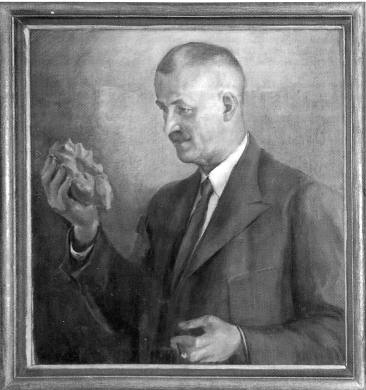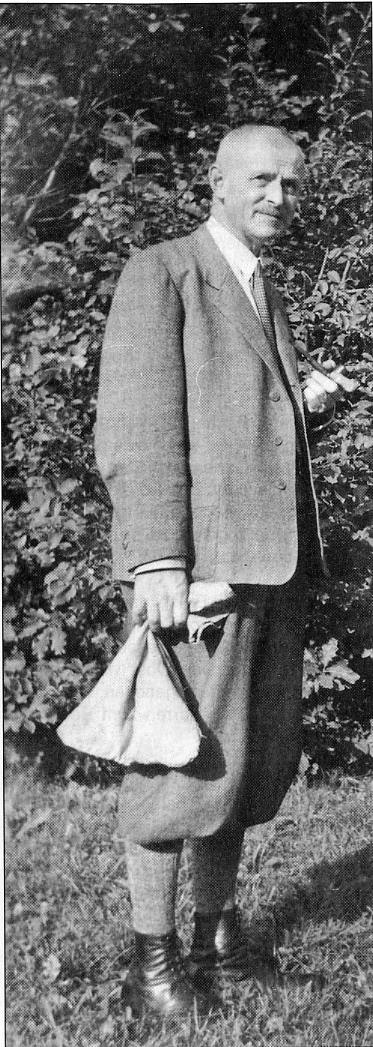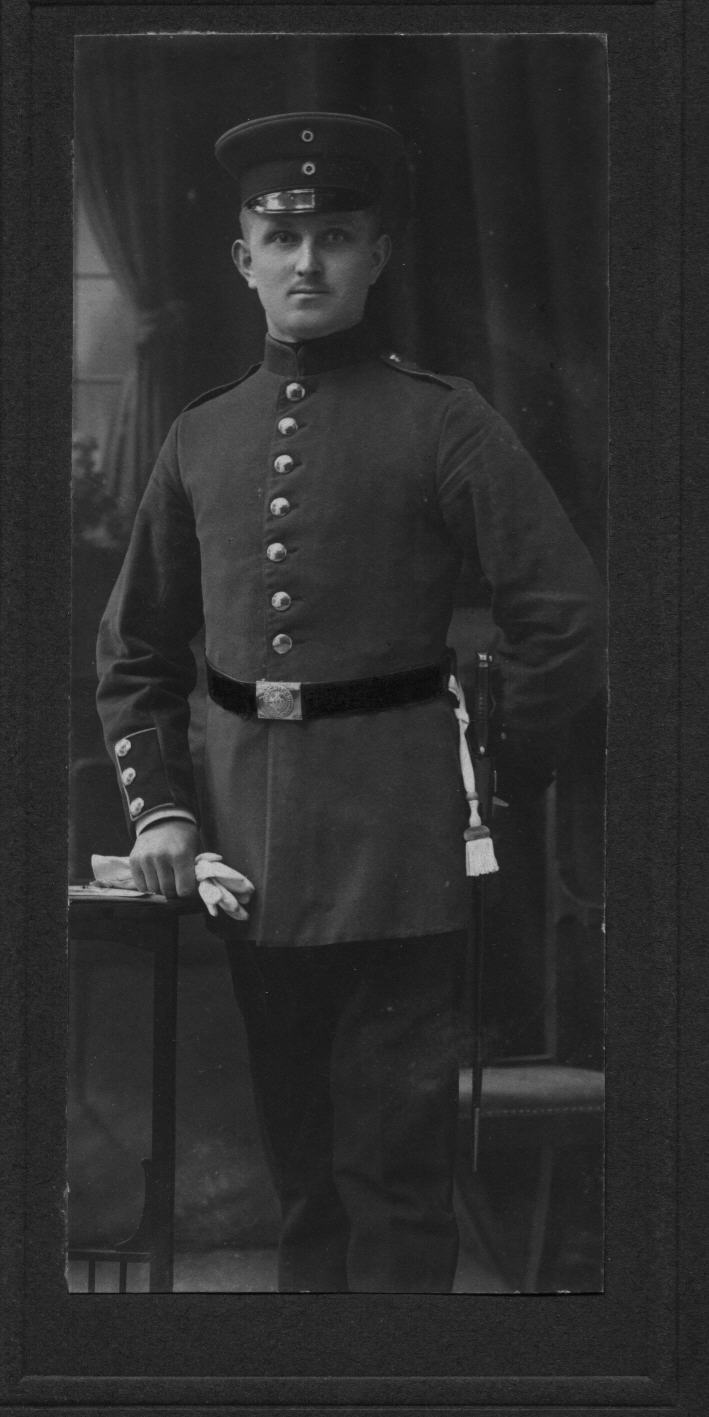-
Posts
2,799 -
Joined
-
Last visited
-
Days Won
32
Content Type
Profiles
Forums
Blogs
Gallery
Events
Store
Posts posted by webr55
-
-
And a painting that shows him with one of his fossils:
 0
0 -
... and on an excursion in 1943:
 0
0 -
As promised, here is Dr. Rühle von Lilienstern at work:
 0
0 -
New information on Dr. Rühle von Lilienstern!
I have found a small publication for the 50th anniversary of his death ("In Memoriam Hugo Rühle von Lilienstern", 1996). According to this book, Rühle was recalled in WW2 as Stabsarzt and director of the military hospital in Erfurt, later in Paris. He was discharged for health reasons as Oberstabsarzt in 1943 and died as a Soviet POW in 1946.
In the same book, his son writes that Rühle was wounded in WW1 and got several high decorations, among them the Red Eagle Order. However, his son was 91 at the time of writing and so probably mixed things up.
There are photos in the book (however none in uniform), I will post some when I get to my scanner.
0 -
According to the Hof- und Staatshandbuch Bayern 1902, this can only be
Dr. Balthasar Ritter von Daller (1835-1911)
He was the director of the Lyzeum (Lycealrektor) in Freising, which can be compared to a college. Daller was also papal domestic prelate, "erzbischöflicher geistlicher Rat" and a Bavarian politician. He got the St. Michael 4th cl in 1899 and the Bavarian Crown Order (which made him Ritter von) in 1901, so the pic was probably taken on that occasion.
Daller got his Dr. in theology from the University of Munich (LMU) in 1861.
1 -
Very nice! I would think #8 is a faded Red Cross/Volkspflege, and #9 looks like it could be a faded Bavarian Voluntary War Aid Cross. Of course, red cross awards do not necessarily indicate a doctor, but in this case, with the accumulation of several ones - maybe a reserve doctor?
0 -
I'm not sure about #1, but #3 has most probably been spiced up. Look at the way the ring shows.
0 -
Wow! The bar of a Jewish Hofrat!

Who can identify all those other awards?
0 -
Thanks, very good to have this list here!
For some reason, the Militär-Handbuch Bayern stopped listing the Non-Bavarians in 1911. So the last Non-Bavarians wearers listed are those who got the order in 1909.
Chris
0 -
This is most certainly not the "acting" archbishop of München and Freising. He would have had higher decorations, such as a Bavarian Crown Order commander. Probably this is some ecclesiastical official.
0 -
Strange. The BZ3a means he must have been a (not too young) Major in 1914, but he was still Major when he got the BZ3aX. I have found 9 candidates in the 1914 RL, but none of them got the BZ3aX in WW1. Those who got a Z?hringen with X got the BZ3amEX already. Maybe he got his BZ3a immediately before the war, after the 1914 ranklist came out...
... or might the oakleaves be missing?
0 -
I'm not sure whether this question has come up before: Has anyone ever tried to find out whether there are any rolls for German officers who received the ?M3K? Archives in Vienna should have survived intact, I would assume.
0 -
Looks more like someone has faked the ribbon bar on the cover of the bandenkatalog?
... but didn't have the proper Z?hringen oakleaves, maybe?
0 -
Honestly, I do not know how to recognize silk ribbons, but they are looking fine to me, and might be silk ...
I had the same problem with another bar some time ago. Silk feels very different, much softer to the fingertips, if you compare 30s bars and WW1 bars.
0 -
The overlay style of the ribbons and the mounting harware used is not of the period for Imperial Russian ribbon bars. This style has has the Austrian look to it. I would fold back the ribbons and check the metal mounting device and see if it is new. Also check the end of the spoke and see if it has been freshly cut. You would see shinny new metal at the end of the pin. Bicycle spokes are commonly used in medal and ribbon bars by dealers from Austria, Romania, Russia to name a few places that are recently made and put together for resale to collectors. The dealers from there would assemble original ribbons and or medals and make an attractive bar reselling it for 2-3 times the value. The givaway is always crude stiching ( Hand sewn using a larger size mil thickness thread of todays standards) , discrepencies on how the medal order are mounted (Dealers usually make a lot of mistakes by mounting in the wrong order due to lack of knowledge), large pins from bicycle spokes and new metal backing hardware being used. Look at each ribbon and medal bar closely to determine if it is of the period.
Thanks for your concerns, but: The metal mounting device does not look new at all under the ribbons. The spoke has not been freshly cut at all from what I can see. The entire bar also shows considerable and consistent wear. The ribbons are not in an obviously wrong order.
Certainly this has the Austrian look, but of which Austrian period? We all agree that this is not pre-1918, but why can't it be 1920s for an Imperial Russian officer in Austrian exile?
Another point: Wouldn't a faker most probably make all ribbons overlap in an equal manner? The last two do not.
Chris
0 -
Ain't it horrible? I feel with you.

But I think your candidate looks good. How many can there have been with an LD1 AND the Portuguese one? And he wasn't too old to get all those WW1 decorations.
I find three possible candidates for a Dr. Wolff, though the last two are rather improbable.
Wilhelm Wolff, Dr. med. from the University of Berlin on 31.07.1877, Dissertation "Über den Zusammenhang des Muskels mit der Sehne". Most probably him.
Wilhelm Wolff, Dr. med. from the University of Würzburg in 1889. This one was "from Kitzingen". I'm not sure whether this was his birthplace or residence, but either way, he looks rather Bavarian.
Wilhelm Theodor Wolff, Dr. med. from the University of Halle in 1875. This one is probably too early (at 23), but in those days, it might have been possible.
Chris
0 -
Wow! He must have got the EK 1914 when he was attach? in Berlin from 1916-20. I try hard to remember, but I think I have never seen a picture of a non-Central Powers soldier wearing an EK before WW2.

Chris
0 -
Georg Scheidt: strange - why did he go aD at 52, during the war and with a promotion to char. VizeAdm? Rick will have an explanation.
But (provided the bar is ok), I don't think it can be him, for several reasons:
- The Osmanie 3rd cl was a NECK order. I think the last ribbon can only be a Bavarian Jubilee.
- With a PKO2 by 1912, he cannot have worn a PKO4 or 3 on his bar.
- His DOA entry might be wrong, but no China medal is listed there.
If the bar is ok, I think #2 is an 1870 medal, and this is a Major/Oberstlt who went aD before WW1 and got the Ludwig Cross (and EK2) as a rear area/Landwehr commander.
0 -
I would think later, much later like 1990's-2000's. I question the thick "bicycle spoke" pin in new condition used for a mounting device. My guess, it was made for collectors.
 That would surprise me! Have you got any fake "bicycle spoke" pin ribbon bars to compare?0
That would surprise me! Have you got any fake "bicycle spoke" pin ribbon bars to compare?0 -
Chip said:Chris,
Is there a photographer's name or address on the cardstock?
Chip
no, there isn't. But as I said, he lived in Krotoschin, so I would think either FüsR 37 or another one in the Posen area.
Chris
0 -
It might have been FüsR 37, because he lived in Krotoschin.
0 -
This is a picture of a relative, probably taken around 1908. He lived in the Posen area and probably served around there, but I guess it is not possible to ID the regiment??
Chris
 0
0 -
so it's not Otto? (Hasse - old thread, another time, another place)
0 -
Thanks for your reply!
 0
0




Lippe Detmold Unpublished Award Rolls 1869-1918
in Germany: Imperial: The Orders, Decorations and Medals of The Imperial German States
Posted
Good work, Rick!